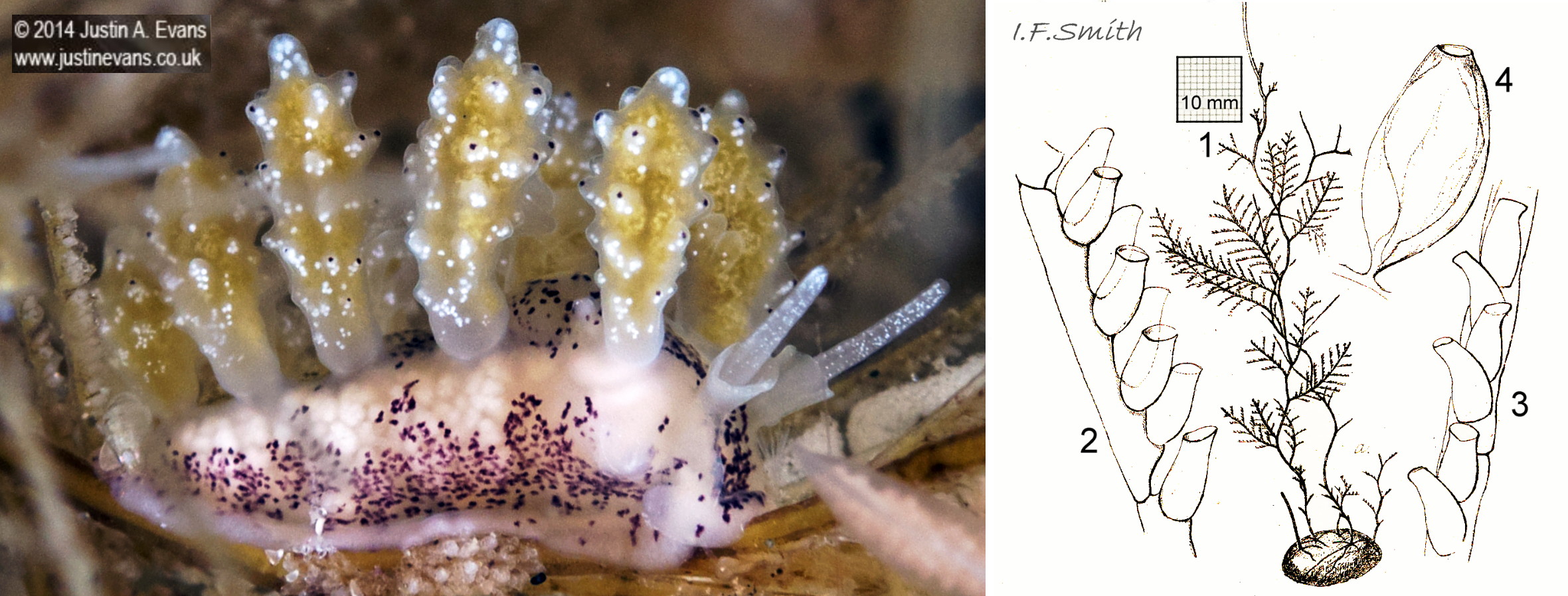1: polyp colony with scale. 2: magnified hydrothecae. 3: magnified hydrothecae, young specimen. 4: magnified gonotheca.
Reddish pigment extending half way up mesial face of cerata [on adults] is “the most distinguishable characteristic of D. coronata”. (Shipman & Gosliner, 2015).
An exception to this is Doto hydrallmaniae Morrow, Thorpe & Picton, 1992 which has “dark red marks on the inner faces of the cerata” on some specimens, though not the one above. See www.habitas.org.uk/marinelife/species.asp?item=W12795
“Morrow et al. discovered D. hydrallmaniae – – with the use of morphology, early molecular methods, and hydroid prey. The relationship of – – D. hydrallmaniae to the true D. coronata – – requires further investigation since D. hydrallmaniae was not incorporated [in the Shipman & Gosliner study] owing to the absence of appropriately preserved material.” (Shipman & Gosliner, 2015).
Few recorders feel able to confidently identify D. hydrallmaniae by morphology, and identifications usually rely on the species of hydroid they are found on.

